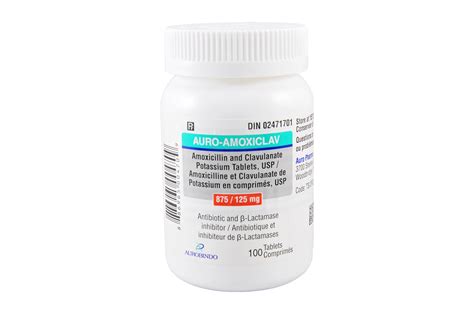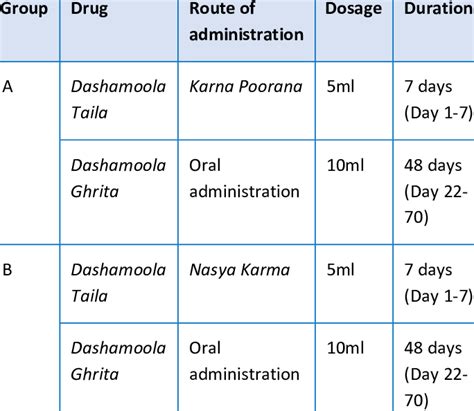Intro
Discover the Amox-Clav 875-125 mg dosage guide, including usage, side effects, and interactions, to safely treat bacterial infections with this antibiotic combination of amoxicillin and clavulanate.
The importance of understanding the proper dosage and usage of antibiotics cannot be overstated, especially when it comes to medications like Amox-Clav 875-125 mg. This combination antibiotic, which includes amoxicillin and clavulanate, is prescribed to treat a variety of bacterial infections, ranging from sinusitis and pneumonia to skin and urinary tract infections. The correct dosage is crucial for effectively combating the infection while minimizing the risk of side effects. In this article, we will delve into the details of Amox-Clav 875-125 mg, including its dosage guide, benefits, potential side effects, and how it works to fight bacterial infections.
When considering the use of Amox-Clav 875-125 mg, it's essential to understand that the dosage may vary based on the patient's age, weight, and the type of infection being treated. The medication is available in various forms, including tablets and oral suspensions, which can affect how the dosage is determined. Furthermore, the presence of certain health conditions, such as kidney or liver disease, may require adjustments to the standard dosage to prevent adverse effects. It's critical for patients to follow the dosage instructions provided by their healthcare provider to ensure the medication's effectiveness and safety.
The mechanism by which Amox-Clav 875-125 mg works involves the combination of amoxicillin, a penicillin-like antibiotic, and clavulanate, a beta-lactamase inhibitor. Amoxicillin functions by interfering with the formation of the bacterial cell wall, leading to the death of the bacteria. However, some bacteria produce enzymes called beta-lactamases that can inactivate amoxicillin. Clavulanate works by inhibiting these enzymes, thereby protecting amoxicillin and allowing it to effectively kill the bacteria. This dual-action approach makes Amox-Clav 875-125 mg a potent weapon against a broad spectrum of bacterial infections.
Understanding Amox-Clav 875-125 Mg

Dosage and Administration

Special Considerations
For patients with renal impairment, the dosage of Amox-Clav 875-125 mg may need to be adjusted to prevent the accumulation of the drug in the body. This is particularly important because amoxicillin and clavulanate are primarily excreted by the kidneys. In cases of severe renal impairment, the dose may be reduced, or the interval between doses may be increased to avoid potential toxicity. Additionally, patients with a history of allergic reactions to penicillins or other beta-lactam antibiotics should use Amox-Clav 875-125 mg with caution, as cross-reactivity can occur.Benefits and Effectiveness

Potential Side Effects
While Amox-Clav 875-125 mg is generally well-tolerated, potential side effects can occur. Common side effects include diarrhea, nausea, vomiting, and rash. Less frequently, patients may experience more serious side effects, such as severe allergic reactions, Clostridioides difficile-associated diarrhea, or liver dysfunction. It's essential for patients to report any side effects to their healthcare provider, as some may require medical attention.Interactions with Other Medications

Precautions and Warnings
Patients with certain medical conditions, such as mononucleosis, may be at increased risk of developing a rash when taking Amox-Clav 875-125 mg. Furthermore, the use of this medication in patients with a history of antibiotic-associated colitis or in those at risk of developing pseudomembranous colitis should be approached with caution. In rare cases, Amox-Clav 875-125 mg can cause a severe and potentially life-threatening allergic reaction. Patients should be advised to seek immediate medical attention if they experience symptoms of an allergic reaction, such as difficulty breathing, swelling of the face or throat, or a severe skin rash.Conclusion and Future Directions

Final Thoughts
The responsible use of antibiotics like Amox-Clav 875-125 mg is crucial not only for treating individual patients but also for preventing the spread of antibiotic-resistant bacteria in the community. By following the prescribed dosage, completing the full course of treatment, and being aware of potential side effects and interactions, patients can contribute to the effective management of bacterial infections while minimizing the risk of complications. Healthcare providers play a vital role in educating patients about the proper use of antibiotics and in monitoring their use to prevent misuse and overuse.What is the typical dosage of Amox-Clav 875-125 mg for adults?
+The typical dosage for adults is 875 mg/125 mg taken every 12 hours or 500 mg/125 mg taken every 8 hours, depending on the severity of the infection and renal function.
Can Amox-Clav 875-125 mg be used in patients with renal impairment?
+Yes, but the dosage may need to be adjusted to prevent the accumulation of the drug in the body. Patients with severe renal impairment may require a reduced dose or an increased interval between doses.
What are the common side effects of Amox-Clav 875-125 mg?
+Common side effects include diarrhea, nausea, vomiting, and rash. Less frequently, patients may experience more serious side effects, such as severe allergic reactions or liver dysfunction.
